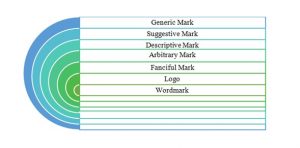By:- Rajat Nischal
A trademark if perceived in a true layman’s sense would be referred to as a visual representation of a word, label, numeric characters, name, or device consumed by an entity in order to segregate/ distinguish its own identity/ services or goods from the previously present comparable services/goods stemming from a different entity/organization. A trademark operates its being in such a sedulous approach that it delivers an exclusive identity (i.e., an exclusive mark which a third party cannot optimize) of that specific service/good offered by that specific service provider/ entity. The moment an entity enrolls itself as a registered trademark, it transmogrifies its own self as an untouchable asset or intellectual property for an entity which is optimized in order to protect the reputation and status of that specific brand/entity.
Learn more about Trademark with Enhelion’s Online Law firm certified Diploma Course!
Considering the contemporary scenario in India, the trademarks are registered under the Trademark Act, 2016 by the Controller General of Patents Designs and Trademarks, Ministry of Commerce and Industry, Government of India. Post the registration as a trademark, the trademark owner gains a right to take legal action for damages when trademarks infringements of occur. Subsequent to a successful registration, symbol ‘R’ can be used by the trademark owner making the validation of his rights for a fixed period of 10 years. Nevertheless, the trademarks forthcoming their expiration can easily be renewed by a simple submission of renewal application.
The registration procedure encompasses the following;
- Filling up registration application form,
- Examination of the trademark
- Publication of the trademark
- Advertisement of the trademark
- Opposition (objections) if raised/ found
- Registration of the trademark and renewal of the trademark after every 10 years.

The checklist consists of a basic necessities
Learn more about Trademark with Enhelion’s Online Law firm certified Diploma Course!
- SEARCHING A TRADEMARK
The applier is suggested to be cautious during the course of selection. This is because, tremendous variety of trademarks are predominantly registered and to make it indisputable, the mark should truly be unique. A thorough research on the trademarks database which is available with the trademarks registry has to be conducted before choosing a unique and exclusive trademark. The database is a prominent option because the search discloses all the types of trademarks that are already available in the market, either registered or unregistered.
- FILING APPLICATION
The concerned application may be filed either in a multi or a single class. The same totally hangs to the specific service/good that the entity holds. The application Form TM-A which can be filled in either ways, may it be online or offline. For offline the applier shall visit the official trademark office depending upon the jurisdiction and for online, the applier shall refer the official intellectual property India website. The trademark application encompasses numerous documents prescribing comprehensive and detailed specifications of the trademark.
Learn more about Trademark with Enhelion’s Online Law firm certified Diploma Course!
- EXAMINATION BY THE AUTHORITIES
After filing the application, asper the guidelines of the Trade Marks Act of 2016, an obligatory examination process of the trademark application is conducted by the government examiner.
The submissions of their examination might reveal certain objections which may be absolute or limited in nature; the aforesaid examination report by the concerned authorities is dispensed within a span of 30 days of having filed the application. In response of the same, in order to remove the objections, an obligatory rational response (including arguments and evidence) to the objections shall be submitted before the authorities.
- AFTER THE EXAMINATION
Upon filing a reply to the investigation report, the authority Examiner may hold legal proceeding if the Examiner is not completely satisfied with the reply filed or if the objections are not satisfied. After the hearing, the Inspector can approve the trade mark and either forward the request for publication to the journal or refuse the application if there is still an estoppel.
Learn more about Trademark with Enhelion’s Online Law firm certified Diploma Course!
- MARKETING AND PUBLISHING
After the application for registration has been approved, the said trademark shall be marketed and published in the Trade Marks Journal for a term of 4 months.
The purpose of the publication and ads is to encourage the general public to file an opposition to the registration of the label. The Trade Marks Journal is accessible on the Official Registry website, which is published every Monday of the week.
- DISAPPROVAL
After the publication of the trademark, any person who has been aggrieved can file a notice of opposition to the registration of the published trademark. The said notice shall be filed via form TM-O within a deadline of 4 months of the actual publication in the trademark journal. In the event of opposition, all the mechanism will function asper the prescribed procedures of law (the said includes; facts, counter-statement complaint, arguments etc.).
Learn more about Trademark with Enhelion’s Online Law firm certified Diploma Course!
- REGISTRATION
The final piece to this whole process is the successful registration of the trademark which comes after travelling journey full of estoppels.
Moreover, in the scenario where no opposition is raised towards the registration of the trademark during the 4 months publication period then, the same will get itself successfully registered within 7 working days.
CATEGORIES OF TRADEMARK UNITS IN INDIA
In India, trademarks can be registered in a multitude of forms. The same includes wordmark, label, logo, as well as device mark. As a condition, the choice to file a trademark as a word mark or logo is indeed a very challenging choice to accept.

- GENERIC MARK
The Generic marks denotes a very generalised explanation of their product or seller. These comprise commonly known words like “food,” “shoes” or “watch.” However, the aforesaid words are a part and parcel of the daily routine of an individual’s life and giving exclusive usage rights for such words would truly amount gross injustice to other individuals of the society. For an illustration, trademark registration for the term “restaurant” is impossible as well as irrational in its very basis. And lawfully, such sort of a registration would exhaustively upshot an unfair monopoly over the entire food and beverage industry. Henceforth, if such terms are registered, unknowingly, countless businesses will have to shut themselves down unnervingly. So, an entity if perceives to uphold a registered mark in its name it shall add another modifier exclusive to its products.
Learn more about Trademark with Enhelion’s Online Law firm certified Diploma Course!
- SUGGESTIVE MARK
Suggestive marks register terms that indicate the quality of a service without actually referring to it in a literal way. Imagination from the end of the user is a key factor in the identification of the mark. A good example would be Netflix, as it makes reference to its service line without explicitly mentioning that it is a video streaming network.
- DESCRIPTIVE MARK
While the generic mark may reflect a commodity or its supplier, the Descriptive Mark refers to just the merchandise. That being said, as these words are considered part of the common language, they are nevertheless non-registerable. However, the inclusion of a ‘signifier’ to identify and define the substantial nature of the substance may qualify it for trademark protection.
Learn more about Trademark with Enhelion’s Online Law firm certified Diploma Course!
- FANCIFUL MARK
This sort of trademark is the easiest one to file. It just includes a new term that does not actually have any meaning for the general public. While smoother to file. In specific, the corporation should closely analyse how the brand will be perceived by the public. It is better to carry out careful study into whether it will be easy to recognize, read, or pronounce. Fanciful marks require informed forethought, too. Brands will most likely prefer their trade to achieve favourable characterizations, but businesses shall also acknowledge the cultural overtones of their fanciful trade mark.
- LOGO
A logo in its true basic sense, enshrines the trademark holder with utmost rights over the amalgamation of words, design, and images together. For an illustration; Adidas, Puma, Nike, Reebok, etc. Above and beyond this, if the customer base of the company is truly based upon its logo, then obviously the entity would prefer to register a patent on that particular logo.
The covering given to the words in the logo mark is reduced as opposed to the regular word marks so the rights in the logo are only valid as a whole. Consequently, if an entity/individual pertains a wish to register a clearly styled appearance or a union of stylized words and design, the registration of a trademark as a logo will be essential.
- WORD MARK
One of the most convenient and sober registration processes belongs to the word mark; a word mark is specifically designated for the name / title of the entity. For an illustration, Britannia and Jio solely possess the word of their entity as a registered mark and the said is called to be acknowledged as a word mark. Post the registration of a trademark as a word mark, the owner gains a blanket right over the usage and practice of the concerned word. The rights wholly support for the variations made in its font or writing style/size, until and unless the word is used asper and in line of the legal specifications enlisted, the word lies in the boundaries of the blanket of the rights owned by the applier.
Learn more about Trademark with Enhelion’s Online Law firm certified Diploma Course!